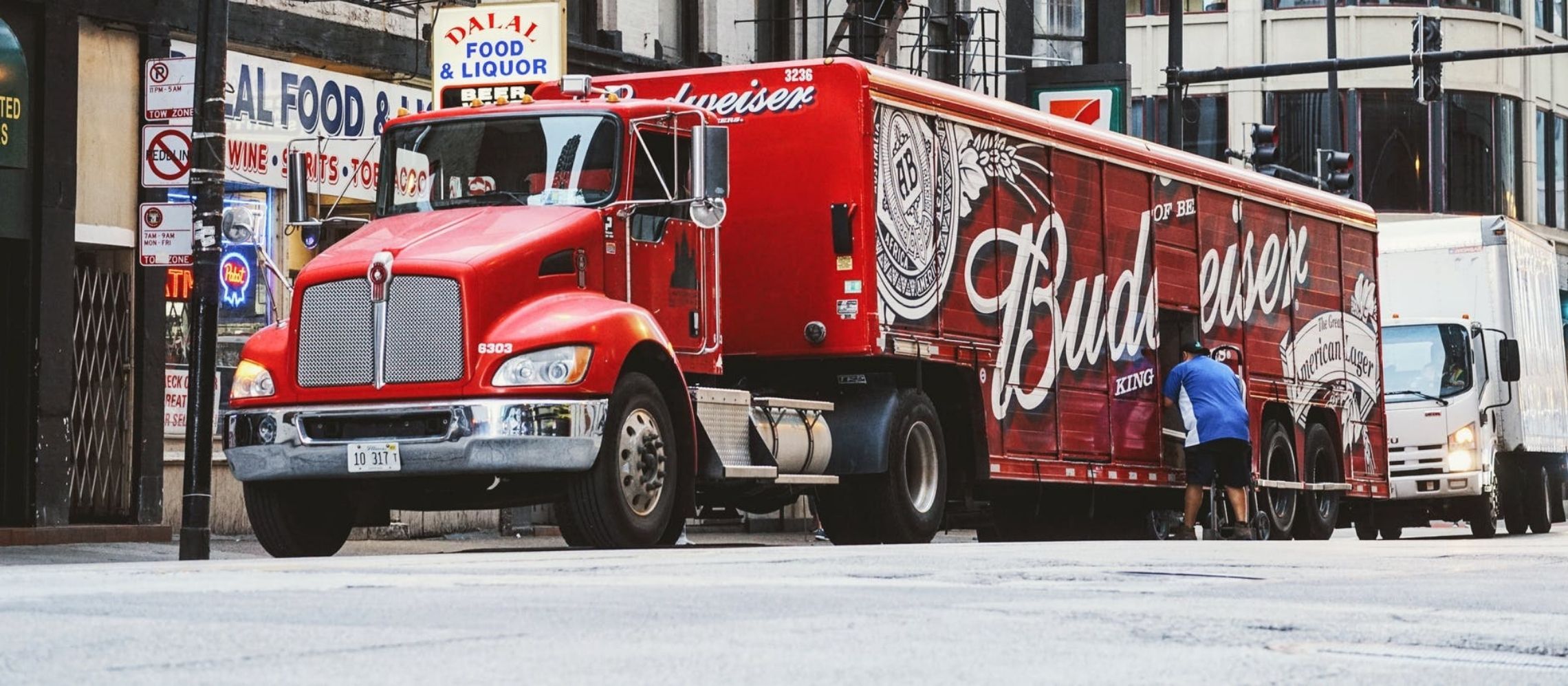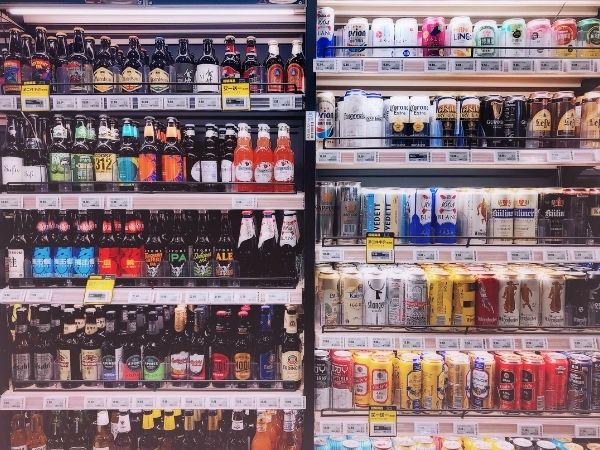Submission Deadline
28 February 2026
Judging
Date
23 March 2026
Winners Announcement
22 April 2026
28 February 2026
23 March 2026
22 April 2026

The issues aren’t new, but with a market so changed in the UK in 2020, as indeed elsewhere, and Christmas just a matter of a few weeks away, it really can pay to know what you can – and need – to do to ensure your importer is always working with you to make the most of a difficult market. All the more so as it’s a situation that’s likely to remain into 2021 and perhaps even, to a greater or lesser degree, until this damaging pandemic is beaten once and for all.
Knowledge is power – so let’s start with the need to have a good understanding of UK beer market dynamics, as well as consumer needs and wants.
The 2020 market figures were already stark, with UK beer sales already at their lowest level for 20 years by the end of this March, impacted by early Covid shutdowns in the on-trade (source: BBPA Beer Barometer). According to Nielsen, UK lockdown saw a fall in overall alcohol consumption due to the decline in on-trade business that was not matched by a rise in ‘at home’ drinking. Although beer has been a major winner since March, with off-trade sales up £737 million as in the same period of 2019, totaling £2.2 billion over a 17 week period, and premium beers up the most at a third higher at £452 million, this has not matched the on-trade volume and value losses.
Longer forecasts/estimates (source: Statistica) show the off-trade taking 47% of beer sales by value in 2020, up from 28% in 2019, and the on-trade not returning to the same market share until 2023 (73% of beer sales by value). Overall volumes are also forecast to be down around 12% in 2020, again not recovering until 2023 – however, this may prove to be optimistic as these figures date from April 2020, before the length and severity of the pandemic has been seen to play out.
So, with less than 2 months to go until the Christmas and New Year holidays begin, with pretty well all trade buying decisions almost certainly already made – and now being re-made with the return of new and ever more stringent lockdown regulations, impacting the hospitality sector in particular in what is a pivotal sales channel for beers – it makes it all the more important to ensure you’re working as a team so you can make the most of the end of this extraordinary year.
There’s still time – albeit not much – to review what’s been agreed with your importer and what can be done to take maximum advantage of this ever-changing situation. Whilst, as the figures show, it’s clearly in the off-trade, retail sector, where the greatest opportunities currently lie, there are a number of marketing and sales fundamentals that will not only help you now, in the run-up to Christmas but also ensure you’re best prepared for whatever 2021 throws at you, as well as getting you ‘match fit’ for when pre-Covid sales dynamics across channels resume once again.
[[relatedPurchasesItems-40]]
Assuming you’ve done your due diligence in terms of your importers business standing and your importer has access to the right customers and you’re tapping into (all of) them, as good a place as any to start is the marketer’s ‘6 Ps’:
Product – ensure your product offering this Christmas best reflects what consumers need and want. With ale drinkers far more experimental than lager drinkers (2019/20 Marston’s Report) you need to look to premium and crafted premium bottled ales, followed by canned ales for incremental business. Lager in all its forms dominates and is forecast to do so through to 2025, growing at a CGR of 1.8% (source: Allied Market Research). Before Covid struck, 2020 was said to be the year of No-Lo remains a growing segment, too, up 30% since 2016 (source: Craft Brewers Trade Association). Consumers also want to know what goes into their drink – there’s a growing interest in gluten-free and vegan beers and lagers, too: authenticity appeals not only to younger drinkers but to more discerning consumers. From a commercial perspective, this also helps in margin retention by driving a higher retail selling price, so is of considerable interest along the distribution chain in these straightened times.

Price – it can certainly pay to review pricing in the lead up to Christmas. As well as formats, multi-bottle and can offers, with savings on single SKUs, also act as sales drivers. Covid isn’t going away any time soon so, notwithstanding Christmas, the ongoing effects of a continuing pandemic and the impact on household incomes is likely to increase consumer interest in lower-cost SKUs. Yet Christmas and New Year can also be viewed as a time of treats: it’s been clear for some time that premium beers, and to a lesser, but nevertheless important extent, super-premium are market drivers, so gift packs will have a role to play.

Place – digital marketing adds an important degree of flexibility for the marketer and an ability to react quickly and nimbly to changing market circumstances. On-line / e-commerce support of the retail sector this Christmas offers the producer, importer, and retailer the chance to make sales and gain competitive advantage, continuing a dynamic that began at the start of the UK’s national lockdown. Kantar shows the UK grocery market growing by 14.4% during this time, with alcohol sales growing well ahead of the market at 28.3% (although down from 41% at its height), with Waitrose Cellar sales reported to have grown by 238% (source: Drinks Retailing). Social media can help drive customers to retailer shelves, whether bricks & mortar or virtual. Of course, the on-trade cannot – and really must not – be ignored because we have to believe it will regain its pre-eminent sales position within the beer sector and digital marketing can still be created to encourage consumers to eat and drink out of home via product offers and promotions.
Promotion – Christmas and New Year are of course ripe for promotions that reflect the holiday season and – reflecting the product dynamic we’ve already touched on – should find you looking again at building sales by revisiting your multi-pack offers, price deals, and specials (we have to presume that Christmas brews and Christmas packaging across the standard, premium and super-premium beer sectors were already agreed – and now’s the time to be planning for 2021 events, like Easter). Taking this further, it’s also possible to run promotional tastings, not only on-line but to look to organise these in a bricks & mortar situation: I’m thinking of the particular opportunities that matching beers and food choices provide.
People – it’s not only a question of understanding the market dynamics in terms of consumer needs and wants but the people you deal with: whilst yours is a business and the bottom line is the ultimate way to judge commercial success, empathy and how you deal with all the people who make up the distribution chain also has an important role to play – after all it’s people who make decisions. At a time when people have found themselves furloughed, or on short-time working, or find their jobs are not as secure as they had thought, makes it even more important to understand what makes your importer tick.

Performance – which leads naturally on to whether your importer is meeting sales targets (no doubt already revised) and you’re able to work together to optimise the opportunities, working to remove any ‘them-and-us’ mentality – at this very difficult time teamwork can pay dividends. It’s important to remember it’s not a one-way street either: you also need to be sure that you’re providing the reasonable help and support – in terms of products, administration, marketing, and financial – you and your importer need to meet sales objectives.
The real point is to take Christmas 2020 and the working arrangements you’re able to put in place to make the best of this sales opportunity as the launchpad for optimising the growth potential of 2021 – and the ‘6 Ps’ are a great ‘tried and tested’ foundation for long terms commercial success.
About The Author
 The article is contributed by Alistair Morrell a Wine Inspector, wine industry consultant, journalist and, commentator. Over 30 years as a wine business professional, Alistair shares his global knowledge, network, and experience of growers, importers, distributors and buyers.
The article is contributed by Alistair Morrell a Wine Inspector, wine industry consultant, journalist and, commentator. Over 30 years as a wine business professional, Alistair shares his global knowledge, network, and experience of growers, importers, distributors and buyers.
 London Beer Competition has been created exclusively to helping drinks producers and brand owners get closer to the buyers, distributors, and retailers that can bring their products to market.
London Beer Competition has been created exclusively to helping drinks producers and brand owners get closer to the buyers, distributors, and retailers that can bring their products to market.
Put your beers in front of top buyers and get rated by Quality, Value for Money, and Packaging.
If you're looking to get in front of a leading panel of top-level beer buyers with current direct commercial buying responsibility in London, now is the best time to enter your beers.
Leading beer brands from around the world now have an opportunity to grow their business and gain the attention of trade buyers and influencers within the UK beer industry. Time to submit your beers in the 2021 London Beer Competition.
Registration Ends: Feb 22, 2020 Enter Now
Warehouse Closes For Samples: Feb 26, 2021
Judging: March 16, 2021
Winners Announced: April 12, 2021
4 to 9 entries: 10% discount
10 to 14 entries: 15% discount
15 or more entries: 20% discount
Show your beers where it matters. Get your products tasted by top buyers and experts at the London Competitions — enter now.